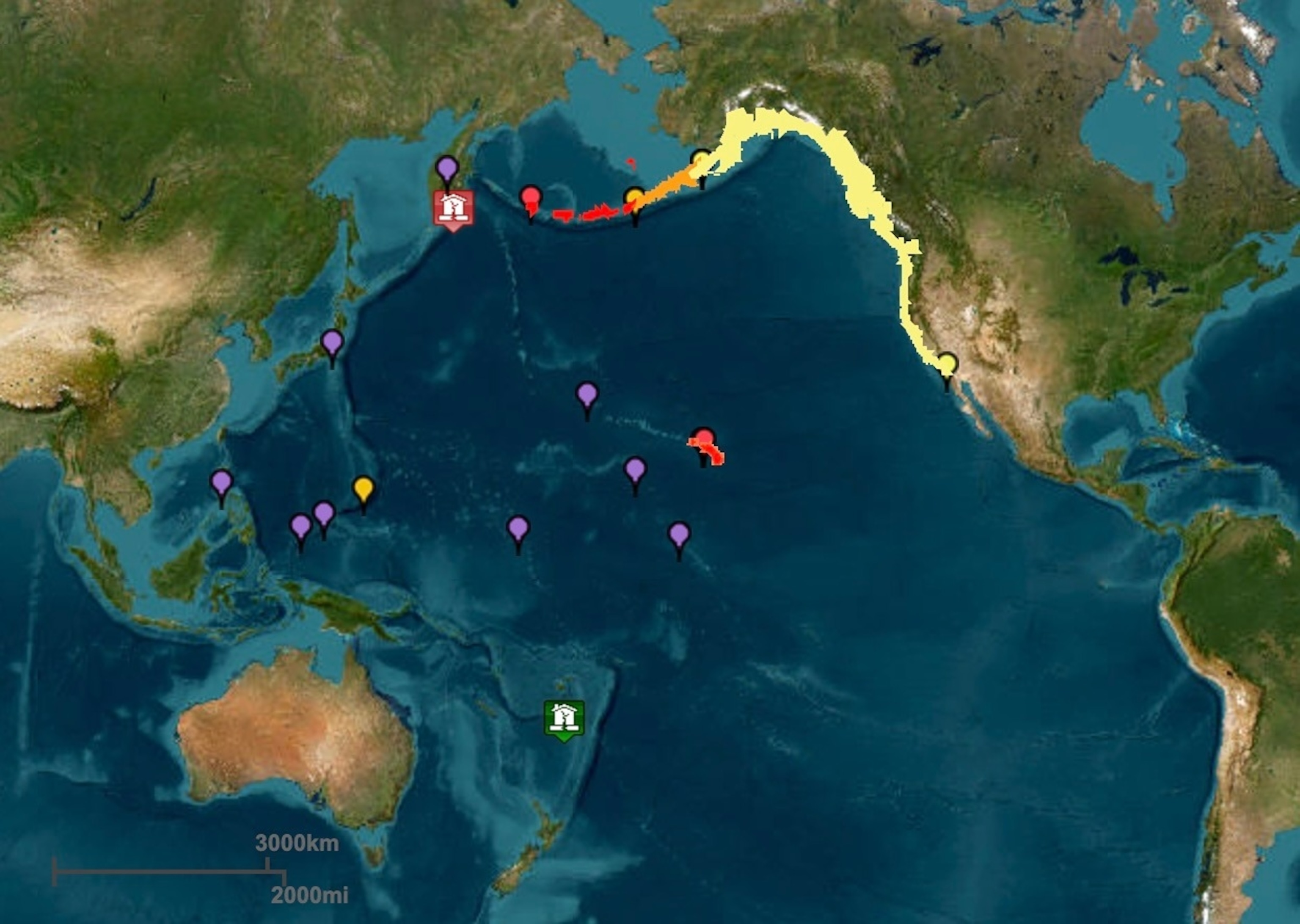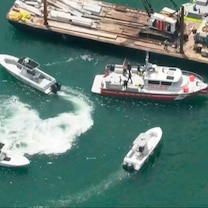Evacuations of coastal areas were underway in Hawaii.
A massive magnitude 8.8 earthquake struck off the coast of Russia on Tuesday, sparking tsunami warnings — and evacuations — in Hawaii and alerts for other areas of the U.S. West Coast.
In Hawaii, the National Weather Service called for “urgent action” to protect lives and property.
Officials there urged residents to leave beaches and evacuate low-lying areas for higher ground.
The first tsunami waves were forecast to reach Hawaii just after 7:15 p.m. local time, which is 1:15 a.m. ET. Destructive tsunami waves are expected, according to Oahu Emergency Management.
Residents in Honolulu were urged to evacuate the primary evacuation zone or go to at least the fourth floor of a building.
“Due to a massive earthquake that occurred in the Pacific Ocean, a Tsunami Warning is in effect for those living in Hawaii,” President Donald Trump posted on social media, urging people to “STAY STRONG AND STAY SAFE.”
All shores of the island are at risk because tsunami waves wrap around islands, according to the National Weather Service.

An 8.7 magnitude earthquake near Russia prompts tsunami alerts along the West Coast, Alaska and Hawaii.
“The danger can continue for many hours after the initial wave as subsequent waves arrive. Tsunami heights cannot be predicted and the first wave may not be the largest,” the NWS said in an alert.
Sources told ABC News the Hawaii Emergency Management Agency has activated its Emergency Operations Center. Officials have also proactively activated their Joint Information Center and are meeting with Hawaii Gov. Josh Green’s team, who will hold a press conference at 5 p.m. local time.
Sirens were set to go off on the Hawaii islands 10 minutes after each hour for the next three hours as a part of a statewide warning system.
In an interview with ABC Honolulu affiliate KITV, Honolulu Mayor Rick Blangiardi urged residents to move to higher ground.
“We need people to stay calm but also to act accordingly. If you can get to higher ground if you’re in a low-lying area, please do that.” He urged caution on the roads amid “bumper-to-bumper traffic” during evacuations.
In addition, a tsunami warning was issued for Alaska’s Aleutian Islands.
The coasts of California, Oregon and Washington are under a tsunami advisory, while the threat was being evaluated.
The U.S. territories of Guam and American Samoa are also under a tsunami advisory, according to USGS.
The intense quake occurred about 85 miles off the east coast of Russia’s Kamchatka Peninsula with a depth of nearly 12 miles, according to the U.S. Geological Survey. It was one of the most powerful earthquakes ever recorded by the agency, which upgraded its magnitude from initial reports of 8.0 and 8.7.
Magnitude 6.3 and 6.9 aftershocks were also reported in the area, according to USGS.
An advisory was also issued for Japan’s Pacific Coast regions from Hokkaido to Kyushu.
Japan’s meteorological agency warned that a tsunami about 1 meter (3 feet) high is expected to reach Hokkaido in the north around 10:00 a.m., local time, with waves arriving later in the day along parts of eastern Honshu and Kyushu in the south.
People are warned to stay away from the coast and river mouths and not to approach the water to observe.
Ecuador and Chile are also under tsunami alerts, according to local officials.
A tsunami warning means that a tsunami that could cause widespread, dangerous flooding and powerful currents is expected. A tsunami watch means a distant earthquake has occurred and a tsunami is possible.
ABC News’ Bonnie Mclean, William Gretsky, Anthony Trotter and Mireya Villarreal contributed to this report.
This is a developing story. Please check back for updates.


